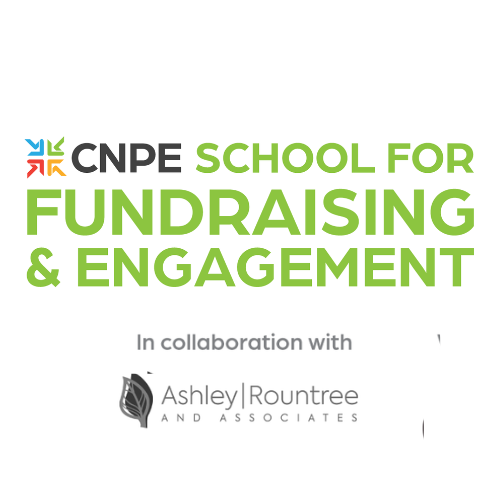Nonprofit Agency: Professional Services to Support Your Goal and Goals
Nonprofit Agency: Professional Services to Support Your Goal and Goals
Blog Article
The Function of Area Involvement in Nonprofit Fundraising: Building Lasting Relationships for Lasting Support
Area involvement is significantly identified as a vital element of effective nonprofit fundraising. By promoting genuine relationships with neighborhood stakeholders, companies can cultivate trust and loyalty, which are vital for sustainable assistance. However, the strategies and techniques used to engage areas differ extensively, increasing important questions about effectiveness and impact. What are the finest practices for cultivating these necessary links, and how can nonprofits determine their success in this field? Understanding these dynamics might substantially affect the future of fundraising initiatives and the general goal of nonprofit organizations.
Understanding Neighborhood Engagement
Community engagement is an important part of effective nonprofit fundraising initiatives. It describes the strategies and activities that organizations employ to get in touch with their neighborhood areas, cultivating connections that are mutually valuable. Understanding area interaction includes acknowledging its diverse nature, which includes cooperation, outreach, and engagement. Nonprofits must determine key stakeholders-- such as community participants, regional companies, and other companies-- to produce effective engagement approaches.
Effective neighborhood engagement is based on active listening and responsiveness to the demands and passions of the community. This procedure involves soliciting responses, recognizing community characteristics, and making certain that the company's mission aligns with neighborhood concerns. Involving the community can take numerous types, including public meetings, volunteer opportunities, and collaboration efforts, each developed to motivate participation and financial investment in the organization's objectives.
In addition, neighborhood engagement need to be come close to as a recurring dialogue instead of a single initiative. By promoting an inclusive environment where neighborhood voices are heard and valued, nonprofits can construct a solid foundation for future fundraising ventures. Ultimately, a deep understanding of community interaction equips organizations to create authentic connections that enhance their general performance and sustainability.
Advantages of Strong Relationships
Strong connections created via area interaction return numerous benefits for nonprofit fundraising efforts. Primarily, these relationships foster count on and credibility, important components in encouraging contributors to contribute. When potential fans see a not-for-profit proactively associated with their neighborhood, they are more probable to think in its mission and influence.

Moreover, these relationships promote effective interaction. Nonprofits can take advantage of their connections to share tales of impact, updates, and requires, making sure that supporters continue to be educated and involved. This open line of interaction not just enhances bonds but additionally encourages word-of-mouth promotion, increasing the nonprofit's reach.
Last but not least, solid neighborhood connections can bring in brand-new partners and sponsors. People and organizations are much more inclined to straighten with organizations that show meaningful neighborhood participation, offering additional resources and assistance that can significantly improve fundraising capacities. Hence, growing robust relationships via neighborhood engagement is integral to a not-for-profit's lasting fundraising success.
Methods for Reliable Involvement
Just how can nonprofits effectively engage their neighborhoods to enhance fundraising efforts? Establishing targeted methods is crucial for fostering purposeful links. First, leveraging social networks platforms allows organizations to share their objective dynamically and interactively, reaching a wider target market. Routine updates, involving material, and calls-to-action can galvanize area interest and participation.
Second, hosting neighborhood occasions, such as workshops, volunteer chances, or fundraising drives, assists in in person communication, permitting nonprofits to display their impact and efforts. These events not only increase funds however also cultivate relationships and enable area members to engage directly with the reason.
Third, implementing individualized interaction strategies can improve engagement. Tailoring messages to particular contributor sections based on interests and past payments cultivates a feeling of belonging and investment in the company's objective.
Lastly, developing partnerships with local services and neighborhood leaders can magnify outreach initiatives. Collaborative efforts can enhance presence and integrity, demonstrating a collective commitment to the community's wellness. By integrating these approaches, nonprofits can construct long lasting relationships that improve fundraising efforts and drive lasting assistance.
Determining Interaction Success
While engaging the community is important for successful nonprofit fundraising, gauging the performance of these interaction efforts is just as essential. Establishing clear metrics enables organizations to assess how well they are Full Report linking with their audience and achieving their fundraising objectives. Trick performance signs (KPIs) such as contributor retention prices, volunteer engagement degrees, and interaction on social media sites systems supply concrete data for examination.

Routinely analyzing these metrics enables companies to pivot their methods when necessary, making certain that neighborhood involvement remains aligned with their total goal. In addition, sharing these outcomes with stakeholders cultivates transparency and constructs trust fund, encouraging more neighborhood involvement. Ultimately, a durable dimension structure not just notifies future fundraising campaigns however also enhances the relationship in between the not-for-profit and its advocates, preparing for sustainable success.
Study in Community Effect
Countless study show the profound impact that community involvement can have on not-for-profit fundraising success. One noteworthy example is the "Something to chew on" initiative, where a local food financial institution partnered with schools and companies to host neighborhood suppers. These occasions not only increased funds yet also promoted a feeling of belonging among individuals, considerably increasing benefactor retention prices.
Another compelling situation is the "Eco-friendly Spaces Project," which involved neighborhood citizens in the revitalization of urban parks. This effort not only amassed financial backing from regional services but likewise cultivated a volunteer base that contributed to recurring upkeep and programming. The feeling of ownership and satisfaction among community participants converted right into continual payments.
In the world of arts, the "Art for All" project successfully engaged regional musicians and clients to create collaborative art installations, causing raised presence and contributions for a neighborhood arts not-for-profit.
These instances highlight that when nonprofits prioritize area participation, they can produce enduring connections that improve fundraising efforts, ensuring sustainable assistance and fostering a lively community society. Such cases demonstrate that neighborhood engagement is not merely an approach yet an essential pillar of not-for-profit success.
Conclusion
Finally, community involvement is indispensable to the success of not-for-profit fundraising efforts. By fostering strong relationships with local stakeholders, organizations improve trust fund and credibility, leading to improved contributor retention and loyalty. Implementing efficient interaction strategies and measuring their impact ensures that nonprofits can adapt and flourish. Eventually, a durable foundation of community support not just intensifies fundraising prospective but also grows a society of partnership, necessary for accomplishing lasting business objectives and check it out maintaining meaningful influence.
Nonprofits must recognize vital stakeholders-- such as area participants, regional companies, and other organizations-- to develop reliable interaction methods.

In verdict, area involvement is integral to the success of not-for-profit fundraising efforts.
Report this page